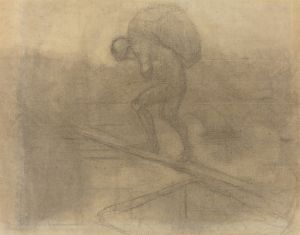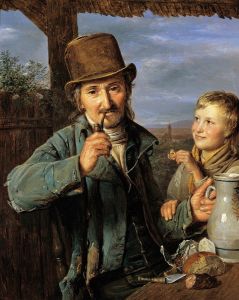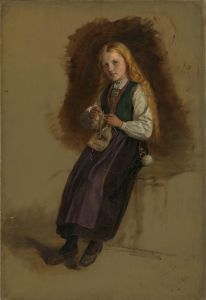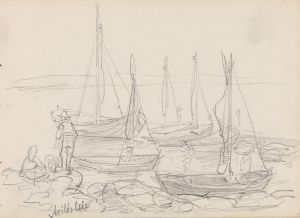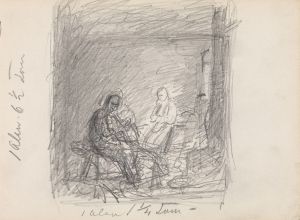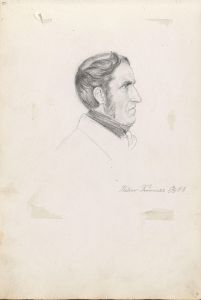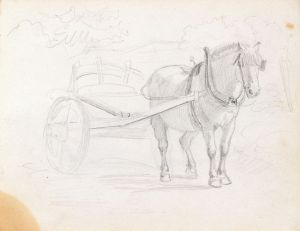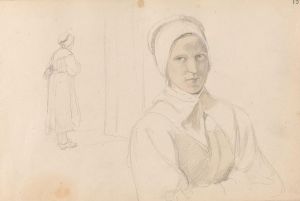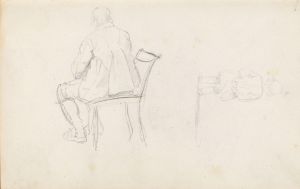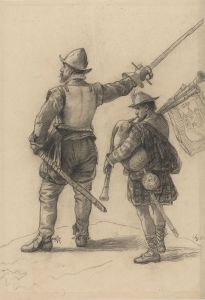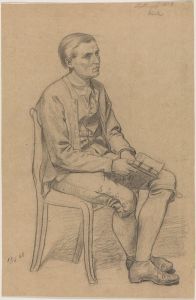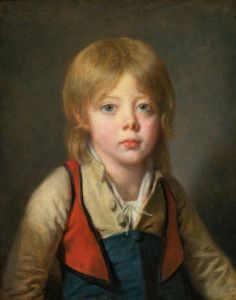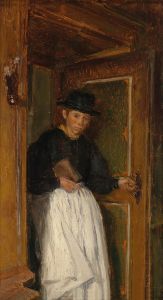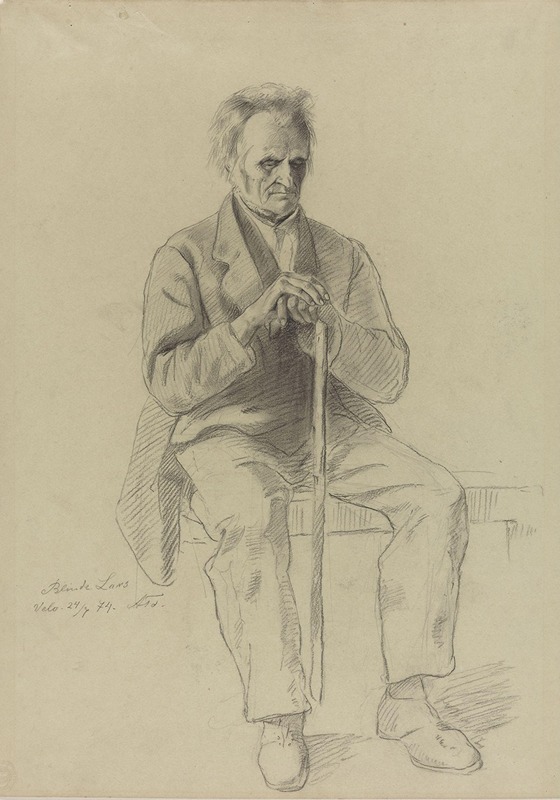
Blinde Lars
A hand-painted replica of Adolph Tidemand’s masterpiece Blinde Lars, meticulously crafted by professional artists to capture the true essence of the original. Each piece is created with museum-quality canvas and rare mineral pigments, carefully painted by experienced artists with delicate brushstrokes and rich, layered colors to perfectly recreate the texture of the original artwork. Unlike machine-printed reproductions, this hand-painted version brings the painting to life, infused with the artist’s emotions and skill in every stroke. Whether for personal collection or home decoration, it instantly elevates the artistic atmosphere of any space.
Adolph Tidemand, a prominent Norwegian painter, created the artwork "Blinde Lars" in 1848. Tidemand is renowned for his detailed and evocative depictions of Norwegian folk life, and "Blinde Lars" is a notable example of his commitment to capturing the essence of rural Norway during the 19th century.
"Blinde Lars" translates to "Blind Lars" in English, and the painting portrays a blind man named Lars, who is a central figure in the composition. The artwork is celebrated for its realistic portrayal and the emotional depth it conveys. Tidemand's meticulous attention to detail and his ability to depict the human condition are evident in this piece.
The painting features Lars seated in a humble, rustic interior, surrounded by elements that reflect the simplicity and hardship of rural life. His blindness is a focal point, and Tidemand uses light and shadow effectively to highlight Lars's condition and the atmosphere of the setting. The expressions and body language of Lars and the surrounding figures convey a sense of empathy and resilience.
Adolph Tidemand was born on August 14, 1814, in Mandal, Norway, and he studied art in Copenhagen and Düsseldorf. He became a leading figure in the Düsseldorf School of painting, which emphasized detailed and realistic portrayals of everyday life. Tidemand's works often focused on Norwegian culture, traditions, and the lives of ordinary people, making him a key figure in the national romantic movement in Norway.
"Blinde Lars" is part of Tidemand's broader oeuvre that includes other significant works such as "Haugianerne" (The Haugeans) and "Brudeferd i Hardanger" (The Bridal Procession in Hardanger), the latter being a collaboration with Hans Gude. These paintings collectively contributed to the development of a national identity in Norway during the 19th century.
The painting "Blinde Lars" is housed in the National Gallery in Oslo, Norway, where it continues to be an important piece of Norwegian cultural heritage. It is appreciated not only for its artistic merit but also for its historical significance in documenting and preserving the way of life in rural Norway during Tidemand's time.
Adolph Tidemand's legacy as an artist is marked by his ability to capture the spirit of the Norwegian people and their environment with authenticity and compassion. "Blinde Lars" remains a testament to his skill and dedication to portraying the human experience with depth and sensitivity.





